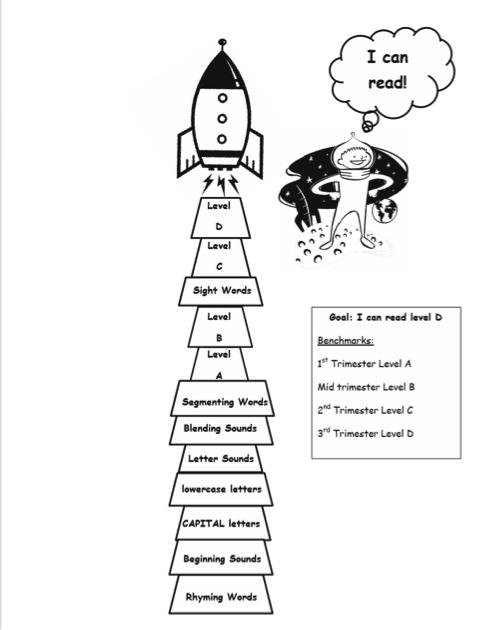Goal-Setting: Wildly Important Goals Ensure Student Success
Author: Kathy Leeser
October 23, 2014

Goal-setting is a powerful behavior that yields results. We see students as young as four or five years old goal-setting and achieving goals in literacy, math, attendance, behavior, and leadership.
Once a student sets a goal with his or her teacher, the essential question becomes “What will it take to achieve that goal?”
Goal-Setting and Wildly Important Goals® (WIGs®)
One way we can start teaching our students goal-setting is to have them focus on what is wildly important to them. Wildly Important Goals® or WIGs® are the few vital goals that must be accomplished in order for the student to be successful.
When we teach students to set WIGs, we are teaching them that there are a vital few goals that must be accomplished in order to be successful. Another way to think about the “G” in WIG is gap. “In what area is there a gap between where I am now and where I need to be?” That’s where a WIG would be created.
A WIG is expressed in a statement that is specific, measurable, and time-bound. For example, “Learn all multiplication facts from the 3’s through the 6’s by December 15.” Having a specific goal helps students see where they need to be and by when.
After a WIG is identified and written, students often don’t know where to begin. Breaking a large goal into actionable steps relieves this confusion. We called those actionable steps lead measures.
In the education world, we have formative, interim, and summative assessments. WIG can be compared to summative assessments. They measure performance after the fact. Lead measures are like interim assessments. They help a student assess progress toward the WIG and make course corrections, if necessary.
A potential lead measure for the WIG concerning multiplication facts is “Study my multiplication facts at home for 20 minutes, 5 days a week.” This measure would be tracked daily to see if progress is being made.
Goal-Setting and Lead Measures Working Together
Here is a great example of how smaller goals can help students achieve an overall goal or WIG. The goal sheet below comes from a kindergarten teacher in Colorado. If a student’s goal is “Read at Level A by the end of Trimester 1,” he or she might establish lead measures pertaining to:
- Rhyming words

- Beginning sounds
- Capital or lowercase letters
- Letter sounds
- Blending sounds
Focusing on these lead measures will help the student stay on track to achieve the overall reading goal and evaluate progress along the way.
Students can sometimes be unsure of how to achieve a long-term goal. When these goals are broken into small steps based on lead measures, it helps them see their progress along the way and ensure success in the long run.
